Archetypal Character Arcs, Pt. 11: The Queen’s Shadow Archetypes
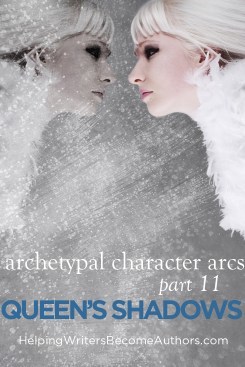 A character who makes it through the Hero Arc is a character who has graduated into a brave new world—the Second Act of the life cycle of archetypal character arcs. This section of life, which deals with questions of relationship and power, begins with the first of the “mature” arcs—that of the Queen. But like all positive archetypes, the Queen’s potential for further transformation is “shadowed” by the possibility of her slipping instead into either of two counter-archetypes—the Snow Queen and the Sorceress. The Snow Queen represents the passive polarity within the Queen’s shadow; the Sorceress represents the aggressive polarity.
A character who makes it through the Hero Arc is a character who has graduated into a brave new world—the Second Act of the life cycle of archetypal character arcs. This section of life, which deals with questions of relationship and power, begins with the first of the “mature” arcs—that of the Queen. But like all positive archetypes, the Queen’s potential for further transformation is “shadowed” by the possibility of her slipping instead into either of two counter-archetypes—the Snow Queen and the Sorceress. The Snow Queen represents the passive polarity within the Queen’s shadow; the Sorceress represents the aggressive polarity.
As with all of the positive archetypes, the Queen’s journey is characterized not just by the external antagonists she faces in bringing order to her Kingdom, but just as much by her personal inner struggle against the lure of her own shadow archetypes.
Instead of rising up to protect her family (whether literal or symbolic), she may “freeze” into the selfish and numb passivity of the Snow Queen—someone who cannot muster the courage and strength to protect those she loves, largely because she has not properly learned the lessons of the First Act in gaining the ability to protect and care for herself.
It is also possible the Queen may instead succumb to the alluring but false power of her aggressive form—the Sorceress. In so doing, she forfeits her true responsibility to become a selfless leader of those she loves, instead even vampirically manipulating those in her charge in order to meet her own needs.
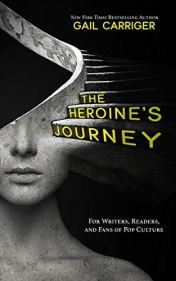
The Heroine’s Journey by Gail Carringer (affiliate link)
By the time we reach the archetypal character arcs of the Second Act, we often start seeing some familiar faces from the previous arcs showing up in supporting roles. Here, it’s the Maiden and the Hero. And not surprisingly, the negative forms of the Queen (and all later archetypes) are almost inevitably the villains in the younger arcs. The Snow Queen and (particularly) the Sorceress most frequently turn up in the Maiden Arc—symbolically representing the Too-Good Mother or Devouring Mother or Evil Step-Mother from which the young person must individuate. In delineating “villainous” Queens, Gail Carringer makes special note, in her book The Heroine’s Journey, about the Queen archetype’s inherent relationship to “network-building”:
If she builds networks, only to sever them at the tiniest hint of betrayal, she’s a great villain. If she sees her power in ruling over others and telling them what to do, or manipulating them into it, rather than asking them because she understands their strengths and delegates accordingly—she’s a villain.
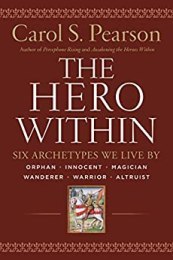
The Hero Within by Carol S. Pearson (affiliate link)
These negative counter-archetypes stand in stark contrast to the nurturing and growth-encouraging potential of a true Queen—who overcomes her own insecurities in order to foster the growth arcs of her young wards. Part of the Queen’s struggle is simply to understand the negative potential within her own arc, by recognizing the signs of the Snow Queen and Sorceress. In The Hero Within, Carol S. Pearson notes:
Understanding archetypes and their positive manifestations operates as a kind of psychological inoculation against their sides (which are often called shadow sides); by being exposed to archetypes and becoming aware of how they operate in us, we can learn to balance, and sometimes even supplant, their more negative aspects. Anything we repress, including archetypes, forms a shadow that can possess us in its negative or even demonic form. Freedom comes with consciousness.
Once again with our series-wide reminder: The arcs and their related archetypes are alternately characterized as feminine and masculine. This is primarily indicating the ebb and flow between integration and individuation, among other qualities. Together all six primary life arcs create a progression that can be found in any human life (provided we complete our early arcs in order to reach the later arcs with a proper foundation). In short, although I will use feminine pronouns in relation to the feminine arcs and masculine pronouns in relation to the masculine arcs, archetypal representations within these journeys can be of any gender.
The Snow Queen: A Passive Refusal to Fight for What She Loves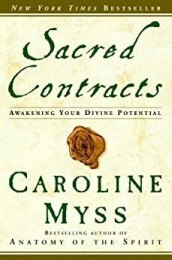
Sacred Contracts by Caroline Myss (affiliate link)
The Snow Queen is one of the saddest archetypes. She is still relatively young, still in the first half of her life. But life itself seems to already have left her. She moves through life as if through a fog. Caroline Myss, in Sacred Contracts, notes that the Snow Queen is not the only one who suffers as a result:
The Ice Queen rules with a cold indifference to the genuine needs of others—whether material or emotional.
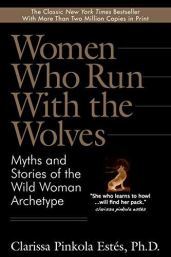
Women Who Run With the Wolves by Clarissa Pinkola Estes (affiliate link)
The chronology of her life has inevitably pushed her along life’s path to some practical degree. She’s not a Damsel any longer, living with her parents. She has perhaps even sketched what looks, on the outside, to be a Hero Arc. The difference here between someone who has truly completed the Hero Arc by individuating into a mature adult versus someone who is “only acting the part” may be largely internal. Usually, it has to do almost entirely with whether or not the character took the true Quest her heart called her to take—or whether she simply took the passive road—the Coward‘s road—by sleepwalking down the path laid out before her by others. Or as Clarissa Pinkola Estés says in Women Who Run With the Wolves:
Some women … give up their life’s dream [and] surrender their true calling in order to lead what they hope will be a more acceptable, fulfilling, and more sanitary life.
She is now at the stage of her life when she expected to be “grown up.” As an adult, she is responsible to other people and specifically to the younger people who are rising up behind her. But she not only has little to give, since she has not properly completed her own initiations, but in her heart of hearts she is still that fair Damsel desiring to be taken care of.
As with all the passive polarities, she is governed by Fear. What she is most afraid of is Love. However much she may crave it, she can never let it fully in because it demands too much—too much maturity, too much responsibility, too much reality.
And so when the threat comes to her Kingdom and her family, she is unequipped to rise to its challenges. At best, she categorizes herself with her children, begging that she too should be saved and taken care of by someone else. At worst, she simply lets the Invaders steal away her children in the hope that at least she might be left in peace.
The Snow Queen’s Potential Arcs: Positive and NegativeThe Snow (or Ice) Queen of fairy and folk tale is often portrayed as a beautiful woman living alone in a palace of ice—who must be rescued (often by children or a young Hero) who warm her frozen heart with the revelation of Love. Estés speaks of forgiveness:
Forgiveness…. does not mean giving up one’s protection, but one’s coldness. One deep form of forgiveness is to cease excluding the other, which includes ceasing to stiff-arm, ignore, act coldly toward, patronizing and phony. It is better for the soul-psyche to closely limit time with people who are difficult for you than to act like an unfeeling manikin.
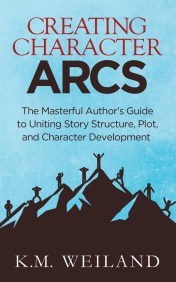
Creating Character Arcs (Amazon affiliate link)
Right there, we can see the deep and beautiful potential within the Snow Queen for a positive arc into a true Queen. The lesson she missed in failing to complete the previous Hero Arc was, in a word, Love. Before she can go on to claim the ruling principle of the true Queen—i.e, Order—she must first be thawed by that Love.
As indicated in the old tales, she may be saved from herself by her own children, who she then will save from the larger threats against the Kingdom. Or she may be saved by the Love of a questing Hero who, within his own arc, submits his power to her as the thing in his life he is finally willing to fight and die for.
But, of course, the Snow Queen may also remain inured within her passivity, and her story may spiral into deep tragedy as her children, or whoever she is responsible for, are plunged into their own tragedies (or at least difficulties) through her lack of responsibility. Whether through the depredations of Invaders or because her family grows up enough to “move on,” the end of her story will find her all alone.
Worse still, she may summon the energy to rise out of her passivity only to hurtle into the full-on destructive manipulation of her aggressive polarity—the Sorceress.
The Sorceress: An Aggressive Refusal to Do What Is Best for What She LovesIn the Snow Queen, we find the shadow archetype of someone who, even in mid-life, has not yet found a true and nourishing flow of Love. We see this same core problem in the Sorceress, but unlike her passive partner, the Sorceress is at least trying to take control of her situation and get her needs met—however misguidedly.
In the article “How Not to Fall in Love with the Anima/Animus,” Sinéad Donohoe makes an interesting note that can be seen to apply to this particular shadow archetype:
As she appears in myth, the temptress is the damsel whose cries for rescue went unheeded, and who has been allowed to perish.
The Sorceress is the Vixen who wasn’t given the support and resources she needed to healthily individuate from her birth family, just as she is also the Bully who used whatever power was available to meet personal needs. Now, in the Second Act of her life cycle, she finally has some freedom from and power over others. But because of her fundamental feeling of lack and her distrust of true Love, she uses any and all means at her disposal to meet her needs by securing resources from others. By this point, many of the people she manipulates are those who are more vulnerable than she is and for whom she herself is now responsible in some way.
In reference to the shadow form of what she calls “the Altruist,” Pearson offers some examples of how this Sorceress energy can manifest in recognizable modern situations:
[People in the shadow form of] the Altruist … will be unable—no matter how hard they work at it—to sacrifice truly out of love and care for others, and their sacrifice will not be transformative. If they sacrifice for their children, the children must then pay and pay and pay—by being appropriately grateful, by living the life the parents wish they had lived, in short, by sacrificing their own lives in return. It is this pseudo-sacrifice, which really is a form of manipulation, that has given sacrifice a bad name.
Virtually everyone these days seems to understand how manipulative the sacrificing mother can be, but another, equally pernicious version is the man who works at a job he hates, says he does it for his wife and children, and then makes them pay by deferring to him, protecting him from criticism or anger, and making him feel safe and secure in his castle. Such a man nearly always requires his wife to sacrifice her own journey in his drama of martyrdom. In these two cases and in others, the underlying message is: “I’ve sacrificed for you, so don’t leave me; stay with me, feed my illusions, help me feel safe and secure.
However unconsciously, the Sorceress preys upon her dependents while they are young and then tries to trap them in a perpetual dependence on her by preventing them from taking their own individuating arcs of Maiden and Hero.
The Sorceress’s Potential Arcs: Positive and NegativeThe deeper a character gets into the life arcs’ shadow archetypes, the harder it can be to pull free. But redemption is always possible (although it can mean reverting to previous positive arcs that were never properly completed).
Like all the aggressive polarities, the Sorceress’s deep pit of problems offers the opportunity for huge positive arcs. If she can somehow find the courage to recognize, acknowledge, and address her own deeply entrenched negative patterns, she may yet find the strength to rise into the true Queen Arc of responsible leadership. This can be the powerful midlife story of someone who has followed the company line all her life, to her own detriment, only to realize she’s living someone else’s life. She chucks it all out the window and finally takes off on the Hero’s Quest she should have taken many years ago.
But she may also fail to break her own destructive patterns. She may remain a Sorceress—an antagonist to other people’s own growth arcs—or she may devolve further into a full-blown despot. By “upping” her power from mere manipulation to full-on oppression, she can take a shadow version of the Queen Arc and end up, not a responsible and loving King, but a hideous and death-dealing Tyrant.
Key Points of the Queen’s Shadow ArchetypesFor easy reference and comparison, I will be sharing some scannable summations of each arc’s key points:
Passive Shadow Archetype: Snow Queen is Defensive (to protect from consequences of Love)
Aggressive Shadow Archetype: Sorceress is Manipulative/Vampiric (aggressive use of Love)
Positive Queen Arc: Protector to Leader (moves from Domestic World to Monarchic World)
Queen’s Story: A Battle.
Queen’s Symbolic Setting: Kingdom
Queen’s Lie vs. Truth: Control vs. Leadership
“Only my loving control can protect those I love.” versus “Only wise leadership and trust in those I love can protect them and allow us all to grow.”
Queen’s Initial Motto: “We, the True Believers.”
Queen’s Archetypal Antagonist: Invader
Queen ’ s Relationship to Own Negative Shadow Archetypes:
Either Snow Queen finally acts in Love for her children by accepting Responsibility.
Or Sorceress learns to submit her selfish Love to the greater love of Responsibility.
Examples of Snow Queen and Sorceress ArchetypesExamples of the Snow Queen and Sorceress archetypes include the following. Click on the links for structural analyses.
Snow Queen
Lady Dedlock in Bleak HouseMary Crawley in Downton Abbey (she also displays Bully qualities, as noted last week, but she exhibits more of the Snow Queen as she gets older)Jon Snow in Game of Thrones (he eventually overcomes his Snow Queen tendencies to become a true leader)Blanche DuBois in A Streetcar Named DesireMr. Darcy in Pride & PrejudiceSorceress
Tai-Lung in Kung-Fu Panda Loki in Thor Scarlett O’Hara in Gone With the Wind Joan Crawford in Mommie DearestCommodus in Gladiator Mrs. Elton in EmmaCersei Lannister in Game of ThronesRodmilla de Ghent (Evil Step-Mother) in Ever AfterStay Tuned: Next week, we will study the shadow archetypes of the King: the Puppet and the Tyrant.
Related Posts:
Story Theory and the Quest for MeaningAn Introduction to Archetypal StoriesArchetypal Character Arcs: A New SeriesThe Maiden ArcThe Hero ArcThe Queen ArcThe King ArcThe Crone ArcThe Mage ArcIntroduction to the 12 Negative ArchetypesThe Maiden’s Shadow ArchetypesThe Hero’s Shadow ArchetypesWordplayers, tell me your opinions! Can you think of any further examples of stories that feature either the Snow Queen or the Sorceress? Tell me in the comments!Click the “Play” button to Listen to Audio Version (or subscribe to the Helping Writers Become Authors podcast in Apple Podcast or Amazon Music).
___
Love Helping Writers Become Authors? You can now become a patron. (Huge thanks to those of you who are already part of my Patreon family!)The post Archetypal Character Arcs, Pt. 11: The Queen’s Shadow Archetypes appeared first on Helping Writers Become Authors.




